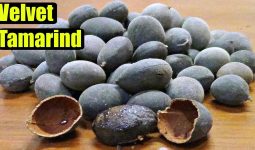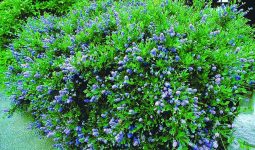The best way to add beautiful hues to your home is with plants, and here are some of the best colorful indoor plants to help you do it.
The best colorful Indoor plants add a touch of nature to your home and have numerous benefits, such as improving air quality and boosting your mood. And with so many colorful options available, you can bring a pop of color to any room in your house.
From the vibrant reds of the Anthurium to the pastel pinks of the Calathea, there’s a colorful indoor plant for every taste. This article will look at some of the best colorful indoor plants to help you choose the perfect one for your home.
1. Anthurium
One of the most vibrant and colorful indoor plants is the Anthurium. Also known as the common Flamingo Flower or Tailflower, this plant is known for its bright red or pink spathes (a type of leaf) and contrasting green leaves.
The Anthurium is a great option for those who struggle to keep their plants alive, as it is relatively easy to care for and thrives in bright, indirect light. It is also a great plant to purify the air. It can remove formaldehyde and other pollutants from the air.
2. Calathea
Another colorful option is the Calathea. This tropical plant is known for its large, patterned leaves that come in various colors, including shades of green, pink, and purple. Also, Calathea is relatively easy to care for and prefers moderate to high humidity and indirect light.
This plant is also known for improving the air quality in the room. It can remove air pollutants such as formaldehyde, xylene, and toluene. This is one of the best colorful indoor plants.
3. Peperomia
The Peperomia is another great indoor plant that offers various colors and patterns. Its small, fleshy leaves come in various hues, including shades of green, red, silver, and yellow. Peperomia is a low-maintenance plant. It can tolerate low light and is easy to care for.
4. The Croton
The Croton, also known as Joseph’s Coat, is another colorful option that adds a lot of personality to any room. Its leaves come in a wide range of colors, including shades of yellow, orange, red, and purple. The Croton is more demanding than the other plants mentioned.
Furthermore, it prefers bright, indirect light and consistent moisture. It is also known to be a great air-purifying plant. It can remove pollutants such as formaldehyde and xylene from the air. This is one of the best colorful indoor plants.
5. Begonias
One of the most striking indoor plants is the Begonias. They are known for their large, colorful leaves in red, pink, and green shades. Begonias are also relatively easy to care for and prefer bright, indirect light and consistent moisture.
6. African Violet
Lastly, the African violet is a classic indoor plant known for its small, delicate flowers in various colors, including pink, purple, and blue. Also, African violets are relatively easy to care for and thrive in bright, indirect light and moderate humidity. This is one of the best colorful indoor plants
7. Variegated Rubber Plant
The rubber plant, which belongs to the Ficus genus, is one of the most gorgeous and vibrant indoor plants. The “Tineke” variety’s younger leaves have an amazing reddish-pink hue on the outside of the foliage.
Even the top of the plant, where the new leaves grow, has a red sheath. In front of a bright window, these plants look especially lovely. This is one of the best colorful indoor plants.
8. Chinese Evergreen
Aglaonemas are beautiful, low-maintenance plants that you can find in a range of hues, including green, pink, and red. The Greek words “Aglaós,” which means bright, and “Nema,” which means threading, are combined to form the name. Green leaves are surrounded by deep red, creating a stunning and distinctive variegation pattern.
9. Alocasia
Plants in the Alocasia genus, known by various common names, will undoubtedly add a dramatic air to your living room. A close-up of the alocasia plant’s long, green and white leaves against a shadowed white background. This indoor plant, which also goes by the names kris plant, black shield, elephant ear, and African mask, has a sculpture-like appearance.
Glossy green leaves of the alocasia have deep purple undersides and prominent white veins on the top side. Furthermore, Alocasia can beautifully enhance an eclectically decorated home when used as a focal point.
One of the varieties of aloe commonly offered as a houseplant, aloe ‘Black Velvet,’ grows to a height and width of one to two feet. Also, only the top inch of soil should be allowed to dry out between waterings, needing bright, indirect light. This is one of the best colorful indoor plants.
10. Arrowhead Vine
A soft touch in terms of color is provided by arrowhead vine (Syngonium podophyllum), which is preferred by those who like a more understated style.
A close-up of potted arrowhead vine plants on a dark table with light pink and green leaves. Additional plants can be seen in the background in soft focus.
This indoor plant, also known as an arrowhead plant, has leaves ranging from light green to light pink. It would go well with the seasonal poinsettias, which have shorter lifespans. An area of your home that is warm, humid, and has bright, indirect sunlight is ideal for arrowhead vine.
Offer it a hanging basket to the trail or a moss pole to grow on since it is a vining plant, and its vines can grow up to six inches long.
11. Bird of Paradise
Bird of paradise, which belongs to the Strelitzia genus, might be the right houseplant for you if you’re searching for a vibrant, tropical burst of color to warm up your interior during the winter.
An illustration of a flowering bird of paradise plant that is vertically oriented and has tall green stems with orange and yellow flowers at the top. The background is a white wall with a window, and the left side of the frame features the end of a sofa with a vibrant cushion.
A taller houseplant, it has long green stems that hold its colorful, beak-shaped flowers in orange, yellow, and blue above its lush green foliage. During the cooler months, the bird of paradise should receive direct and bright indirect sun during the warmer months. Just the top inch of the soil should dry out between waterings. This is one of the best colorful indoor plants.
12. Chinese Evergreen
Another fairly typical indoor plant is the Chinese evergreen, also known as the common name for several species of the Aglaonema genus. It is a green and white variety. The varieties with red leaf veins and margins, however, will surprise you and may even blow your mind.
A close-up of the Chinese evergreen plant’s leaves. The pink stems and veins contrast with the light and dark green. Another red and green indoor plant that would look great with your holiday decorations is this one. After the celebrations, keep it on hand to ease the after-holiday blues.
Chinese evergreens grow to a height and width of about 1.5 feet and prefer low to strong indirect light. Although generally a low-maintenance house plant, it shouldn’t be allowed to dry out between waterings. This is one of the best colorful indoor plants.
13. Coleus
The stunning foliage and leaves of Coleus plants, which appear to come in various sizes and shapes, are well known. For added interest, the leaf edges can also be scalloped or ruffled.
You can find foliage in shades of green, cream, yellow, orange, red, maroon, and brown combined in various arrangements and patterns thanks to the availability of hundreds of different cultivars. Additionally, it is simple to grow and spread these plants.
14. Christmas Cactus
Pay attention to the vivid blooms of the Schlumbergera genus Christmas cacti in relation to the holidays. These flowers can be found in various hues, including white, pink, red, purple, and even yellow.
A close-up of a flowering Christmas cactus plant with striking red and white flowers and succulent green leaves on a wooden surface. Christmas cactus is a medium-sized decorative houseplant that adds color and texture to a desk, tabletop, or hanging basket. Christmas cacti are easy-care plants that will lift your mood during the winter.
Furthermore, Christmas cacti should be watered when the top inch of soil is dry and need bright, indirect light to grow. Furthermore, a special routine of cool temperatures and long nights is necessary to promote blooming year after year.
15. Cyclamen
Cyclamen species, a member of the primrose family, is another small-footprint option that works well in cramped areas. Loved for the elegance of both its foliage and flowers, cyclamen.
A close-up of cyclamen flowers in contrast to the pale veins and green leaves. A shadow and a white wall make up the background. Above heart-shaped leaves, cyclamens have upswept flowers supported on delicate stems. The heart-shaped flowers of this plant can be white, pink, red, or purple, and their leaves frequently sport silvery patterns.
This charming houseplant is another excellent option for a small area because it only grows to a height and width of nine inches and does well in bright, indirect sunlight.
However, except for the plant’s dormant season in the summer, when you should be watered less frequently, keep the soil in your cyclamen plant moist. This is one of the best colorful indoor plants.
16. Gerbera Daisy
A young child will likely draw a flower that resembles the gerbera daisy (Gerbera species). Although gerberas are frequently included in bouquets, they can also liven up your home as a houseplant.
A yellow gerbera flower in closeup with delicate petals against a soft background. Your indoor space will feel summery thanks to the gerbera daisy flowers. They make a good tabletop plant because they come in almost all colors and can reach a height of 18 inches.
Although they prefer cooler temperatures, gerbera daisies require a few hours of direct sunlight daily. The best place to keep them indoors will be near a bright eastern window after the top inch of soil has dried. This is one of the best colorful indoor plants.
17. Kalanchoe
You may be familiar with kalanchoe, a succulent plant with small white, red, pink, orange, yellow, or purple blooms. It has green leaves.
A close-up of a kalanchoe plant on a table with yellow flowers, showing its succulent leaves and striking pink flowers. A soft-focus terra cotta pot can be seen in the background.
However, some kalanchoe varieties have unique foliage patterns and colorful plantlets that grow on the edges of their leaves. This houseplant comes in various vibrant colors to tempt the adventurous botanist. And if you’re one of those brave souls, growing kalanchoe could be an interesting horticulture project.
18. Nerve Plant
Nerve plant, also known as mosaic plant or simply by its genus name, Fittonia, is prized for its striking foliage.
A close-up of a fittonia plant with a striking purple, green, and pink leaf combination. Even though the webbed patterns that give fittonia its common name—highly contrasting leaf veins—instead of nerves, this characteristic is undoubtedly what makes nerve plants attractive.
Fittonia has fascinating leaves that can be either light or dark green with white, red, or pink veins.
Nerve plants thrive in a humid environment to flourish in a terrarium. For a holiday display, a cluster of these vibrantly colored, low-growing plants would look stunning, encircling a taller houseplant with eye-catching flowers, like an anthurium. This is one of the best colorful indoor plants.
19. Orchid
The Orchidaceae family of plants, including orchids, has an unjustified reputation as difficult houseplants. This is probably because devoted owners give them too much attention.
With their exquisite blossoms, orchids can make a stunning addition to your home’s decor. A white and light pink orchid flower in close-up. A salmon-pink sofa can be seen fading into soft focus in the distance.
Orchid flowers are available in a dizzying array of sizes and hues. You can find orchid blossoms in pretty much any color, delicate whites, menacing blacks, or vivid pinks.
There are numerous kinds of orchids, and each will require a different type of care. Make sure to research your particular species to provide the right amount of light and water. This is one of the best colorful indoor plants.
20. Flamingo Flower
Flamingo flowers can be difficult to grow and are less well-known than some of the other colorful houseplants on this list. However, they are well worth the effort due to their intricate foliage and rare blooms, especially since, with proper care, their “flowers” last for months.
Waxy heart-shaped bracts with a finger-like projection that opens in red, orangish-red, or pink instead of actual flowers with petals containing tiny flowers. These plants are also known as “Pigtail plants” because of the spadix, which resembles the curlicue on a pig’s tail.
21. Madagascar Dragon Tree
The red-edged dragon tree of Madagascar’s stiff, narrow, green leaves of the dracaena is banded in red or pink and are a very well-liked indoor plant. It is simple to grow, and the stems take on a more treelike appearance as it matures.
Outside, astounding heights of 8 to 15 feet and a width of almost 8 feet are possible! They gradually rise to 6 feet when grown as an indoor plant in bright light, resembling a miniature palm tree. One of the best indoor plants for color is this one.
22. Palm Lily
Instead of being tucked into a group planting when grown outdoors, the palm lily is typically grown as a specimen plant, where its startlingly pink variegated leaves put on a spectacular display. Native to Australia, these tiny evergreen shrubs have long, arching, leathery leaves and thrive indoors in a bright area with lots of diffuse light.
23. Poinsettia
Poinsettias (Euphorbia pulcherrima), which are frequently treated as disposable holiday decorations, can be kept as houseplants and, with proper care, will produce an annual display of vibrant color.
Poinsettias are available in colors other than traditional red, including white, pink, purple, orange, yellow, and salmon. There are more options with variegated poinsettias.
A close-up of various poinsetta plant varieties. Some are in pots on a wooden surface and have red and white two-tone leaves, while others have white, red, or orange leaves. The poinsettia’s colorful bracts modified leaves, rather than its flowers, give it its color.
You must give your plant a multi-week period of rest with long nights and cooler temperatures, followed by a pre-bloom season of bright sunlight, to get it to produce these colorful leaves every year. This is one of the best colorful indoor plants.
24. Polka Dot Plant
Another plant whose foliage you’ll appreciate is the polka-dot plant (Hypoestes Phyllostachys). Fittonia-like in its colors and patterns, it grows taller and has bigger leaves.
An up-close view of the polka dot plant’s spotted, green, and light pink leaves. Other leaves with different patterns are in the background, softening in focus. The polka dot plant has vividly colored leaves veined in white or pink with green stripes. This houseplant would brighten a nook or add texture when placed in a grouping with some flowering specimens.
It prefers high humidity and grows to one to two feet with a one-foot spread. Make sure it doesn’t completely dry out between waterings, and don’t let it stand in water, either. This is one of the best colorful indoor plants.
25. Rex Begonia
Begonia rex cultorum, also known as the rex begonia, is known for its striking foliage. These plants, also known as painted-leaf, fancy-leaf, or king begonias, are eye-catching.
A close-up of a red begonia plant on a wooden table with striking leaves in dark and light green shades. Other indoor plants are nearby a window in the background.
Rex begonias, related to the more subdued wax begonia, have strikingly patterned foliage with swirls, splotches, spirals, and mixtures of silver, green, red, pink, purple, and black.
These houseplants require a fair amount of care. They prefer a humid environment but dislike having their feet wet, so misting them with a spray bottle will be an important part of your daily care regimen. Give your rex begonias plenty of bright, indirect sunlight.
26. Spiderwort
One of my all-time favorite indoor plants is the Tradescantia genus’s spiderwort. It’s a simple, elegant solution to grow from cuttings. Inch plant is another name for it.
A close-up of a spiderwort plant with curved, dark purple and white leaves is shown in a yellow pot. A blue wall and a wooden surface make up the background.
Its trailing foliage is available in various color combinations, including solid shades of green, dark purple, white and green, green and purple, and my favorite, green and lilac.
Although spiderwort is frequently seen in hanging baskets, it can also be displayed in smaller, adornment tabletop containers. This is one of the best colorful indoor plants.
27. Purple Velvet Plant
The purple velvet plant, also known as the Purple passion plant or Gynura, is a singular plant that catches people’s attention thanks to its unusually shaped, velvety leaves. The plant, native to Indonesia, has thick, dark purple hairs covering its bright to dark green leaves, giving it a fuzzy appearance similar to and distinct from the African violet.
Furthermore, the orange flowers from the purple velvet plant may bloom, but most people remove them due to their disagreeable scent. Plants prefer temperatures between 60 and 70 °F, which are a little cooler.
28. Silver Vase Plant
More than any other type of bromeliad, the silver vase plant, one of its most well-known species, is grown indoors as a houseplant. The silver vase plant also called the urn plant, gets its name from its silvery-green, leathery leaves, which grow into an upright rosette with a central cup that stores water and nutrients.
The striking, exotic bright pink flowers are bracts, or modified leaves, open and have a collection of tiny blue blossoms inside. Up to six months can pass between blooms on this bract. This is one of the best colorful indoor plants.
29. Snake Plant
The snake plant, also known as mother-in-tongue, law’s is a common houseplant in homes all over the world. It has sword-shaped leaves ranging from solid green to green with cross-bands to deep golden yellow.
Furthermore, Plants grow to a height of three feet or more and are simple to maintain. The leaves can be long and narrow, short and wide, or even curl into spike-like cylindrical shapes. Just be mindful not to drown a snake plant in water as they are prone to root rot.
30. Ti Plant
The ti plant also referred to as the good luck plant, is of great cultural significance in regions where animism is practiced. In addition to green, pink, orange, red, and chocolate brown, these attractive evergreen plants also come in other hues and variations.
However, when fully grown, plants can grow up to about three feet tall and form a tier-by-tier rosette. To keep the foliage vibrant and bold, keep them in medium light or bright diffuse sunlight; insufficient light causes the colors to be dull and fade.
31. Succulents
Although “succulent” does not specifically refer to a particular species, genus, or family, these plants are frequently sold under this heading without much additional information. We shouldn’t ignore them, though, because of that!
Various succulent plants grow in a container indoors from the top down in close-up.Succulents come in an amazing range of hues, forms, and dimensions. On some, the leaves even have lovely patterns.
They come in various colors, including lovely pastels, subdued reds, and vivid lime greens. Sempervivum, Echeveria, and Lithops are a few genera frequently sold under the more general term “succulents.” This is one of the best colorful indoor plants.
32. Variegated Shell Ginger
The brightly colored gold and green variegated leaves and the showy, tropical flowers of the variegated shell ginger (Alpinia zerumbet ‘Variegata’) will make your home shine.
A close-up of a variegated shell ginger plant with two-toned green leaves and white flowers hanging downward with pink tips. Variegated shell ginger, a relative of culinary ginger, typically grows indoors to about four feet but can grow as tall as 10 feet under the right circumstances.
This ornamental ginger will be a showpiece in your home this winter if you can provide it with bright light and a little more humidity. A close-up of a white shell ginger plant with pink tips and two-toned leaves in light and dark green on a soft focus background. This is one of the best colorful indoor plants.
33. Vase Plant
Aechmea fasciata, a type of bromeliad related to smaller air plants, is a vase plant. This bromeliad, also known as the silver vase plant or urn plant, features a stunning inflorescence from a rosette of variegated green, purple, or pink leaves.
A close-up of a bromeliad vase plant, a round plant with pink, white, purple, and green hues. This vibrant, medium- to large-sized houseplant will give your house a touch of the tropics without taking up much space. It would look nice on a side table or shelf with diffused light.
Maintain a small amount of water in the central cup formed by its rosette of leaves, and keep the soil moist but well-drained. The plant will die after flowering, but puppies will emerge from the mother plant’s base.
34. Wandering Jew
Due to its ease of growth, the Wandering Jew, a variety of spiderwort, is also referred to as an inch plant. On average, this traditional houseplant grows an inch weekly, and you only need one inch to start a new plant. Put this lovely plant in a hanging basket or a pot on top of a bookshelf to display its trailing vines of leaves with purple undersides and green, white, and grey stripes.
It needs a lot of direct sunlight to keep its vibrant colors, but too much can wash out the leaf’s color. This is one of the best colorful indoor plants. When choosing a colorful indoor plant, it’s important to consider its specific needs to provide the best care. Be sure to research the plant’s light, water, and temperature requirements, and make sure the space you have in mind for the plant will meet those needs.
In conclusion, indoor plants are a wonderful addition to any home. They bring a touch of nature inside, improve air quality, and can boost our mood. There are many colorful indoor plants, each with unique characteristics and benefits.








